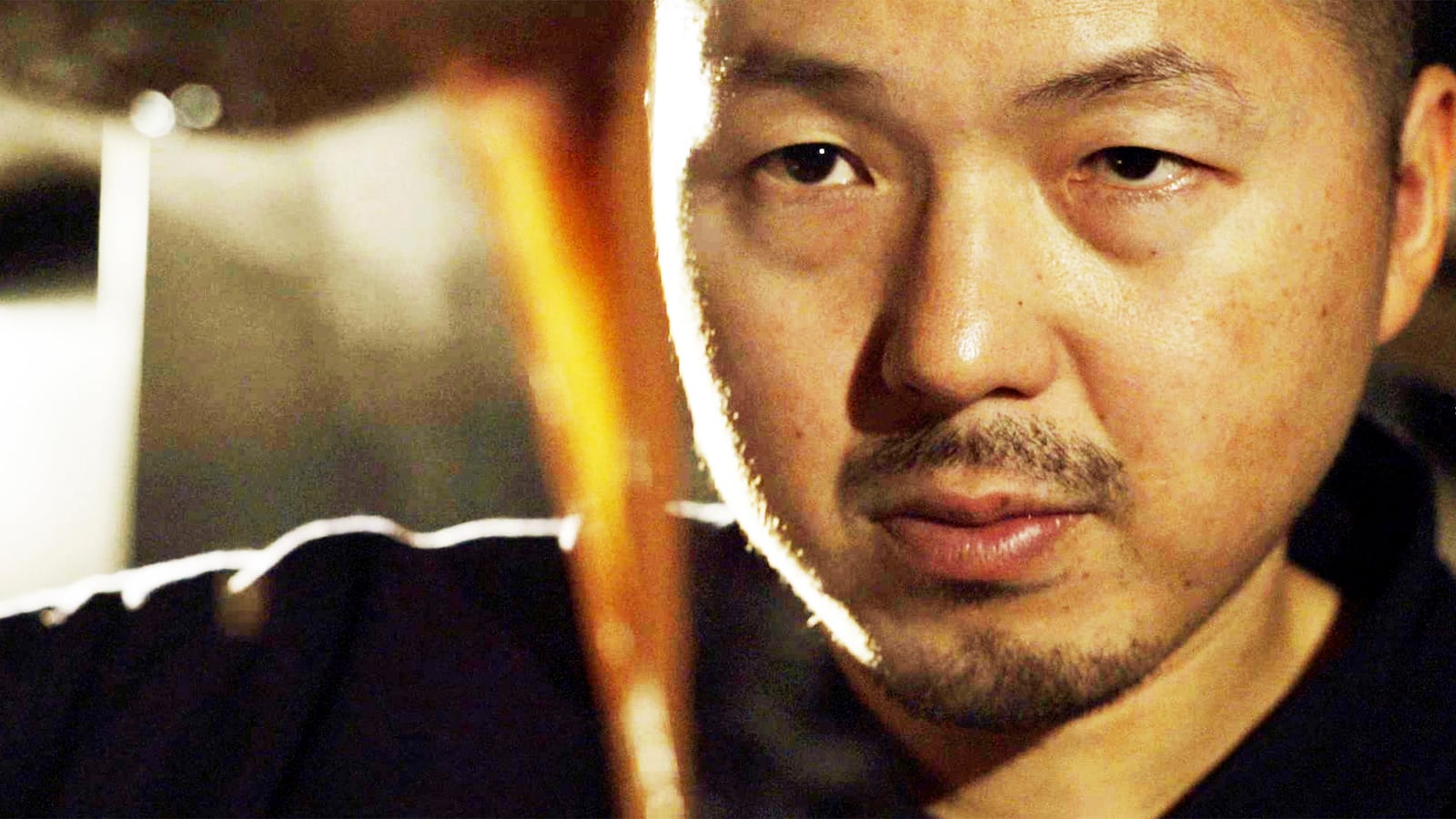There are few things in life as pleasurable as watching someone cook. To scratch that particular itch, “food” has somehow become a proper genre of entertainment, featuring TV shows (MasterChef, The Great British Baking Show) as well as food documentaries (Jiro Dreams of Sushi) and food-oriented movies (Burnt, Chef), because, really, who doesn’t like to eat? Sure, the food you’re seeing on-screen (probably) isn’t immediately accessible, but there’s something comforting about it anyway.
The latest entry into the genre is Ramen Heads. Directed by Koki Shigeno, the documentary provides a look into some of Japan’s most lauded ramen shops and the different processes and philosophies behind them. Beginning and ending with meditations on the feeling of eating ramen, it's a love letter to the dish—and, to that end, not a bad double feature with Tampopo, the 1985 comedy that was heralded as a “ramen western” and has gained cult status since then. As one of the ramen chefs says, the ramen that a shop serves must be good enough that a customer would be happy to eat only that ramen for breakfast, lunch, and dinner. (Soon afterwards, a customer waiting outside a shop says that he’s eaten there over 400 times, and would be happy to have only that ramen for the rest of his life.)
Insomuch as it’s quite slim—unlike the broths it showcases—Ramen Heads is ultimately forgettable, but it should still please ramen heads (“ramen baka” in Japanese, which translates more literally to “ramen idiots”) as well as anyone looking for something relatively easy to watch. There aren’t exactly any stakes to it, though there is a brief emotional pull as the filmmakers detour to visit a ramen master’s home and meet his family.

Osamu Tomita, known as the “king of ramen” and recipient of the Best Ramen of the Year award from Japan’s most prestigious ramen guidebook for four years in a row as of the documentary’s filming, is our main subject. Once an apprentice of ramen legend Kazuo Yamagishi, Tomita has since opened his own shop, and the main narrative push in Ramen Heads is his quest to devise the perfect ramen to serve for the shop’s 10th anniversary. But, like everything else in the documentary, the drama takes a back seat to the ramen itself. It’s interesting because his process involves calling in two other ramen masters, Shota Iida and Yuki Onishi, and experimenting with different ingredients to perfect the broth.
Though trade secrets are common in the food industry, Tomita is open about how he cooks, sharing his list of ingredients and showing off his kitchen to the visiting camera crew. The only “secret” he really keeps is how he mixes his broth. It’s based on intuition, after all. It’s the Mozart and Salieri divide, but in food, and it’s what makes documentaries like this so engrossing.
There’s also, of course, the endless fascination with the discipline and obsession that seem necessary in order to ascend the gourmet echelons. The chefs of Ramen Heads don’t go to quite the extremes seen on shows like Chef’s Table, but they’re still a dedicated bunch. Tomita stays on his feet for the entire time his restaurant remains open, without breaking for lunch. He only eats after the restaurant has closed. One of the other ramen chefs serves 700-800 people per day; 1,000 on weekends, he says, and up to 1,600 on his busiest days.
He owns the ramen shop with the highest sales volume in Japan, according to Shigeno. He’s also something of an anomaly in the world of Ramen Heads. Ramen isn’t a calling for him the way that it is for chefs like Tomita. Rather, it’s just how he makes his living. “Things don’t always turn out the way you planned,” he says obliquely, as he talks to a customer about the decades he’s been running the shop. “Ramen isn’t something to theorize about,” he continues, this time to the documentary crew, “There’s no accounting for taste. I don’t give a hoot about what ramen is supposed to be.” But he’s not bitter about it, nor uncaring. It just is what it is.
His candor is refreshing in a genre that’s often taken to mythologizing. It’s a balance for the other chefs in the documentary, who all perceive ramen as a science or an art, and labor obsessively over their techniques. (One chef sticks his rolling pin under his knee and uses his leg to help pound the noodles.) It’s also in line with Shigeno’s ultimate exploration of ramen as, in the words of yet another chef, a food that “has always been designed around the needs of time.”
The only part of Ramen Heads that doesn’t focus on an individual chef is an explanation of ramen’s history, framing it as an explicitly postwar product. It’s a fascinating dive into the dish’s history and evolution, and a welcome contextualization when it’d be easy just to focus on the process of cooking. Through this lens, the fact that there are no stakes to Ramen Heads becomes an asset rather than a fault: The many varieties of ramen that have grown out of postwar Japan are something to be celebrated and enjoyed.
In a similar vein, Ramen Heads is a simple delight. At the risk of using too many food-related words, it’s easily digestible, but a treat nevertheless. Simply shot and edited (you may notice a few instances of Comic Sans), it’s not unlike ramen itself.





